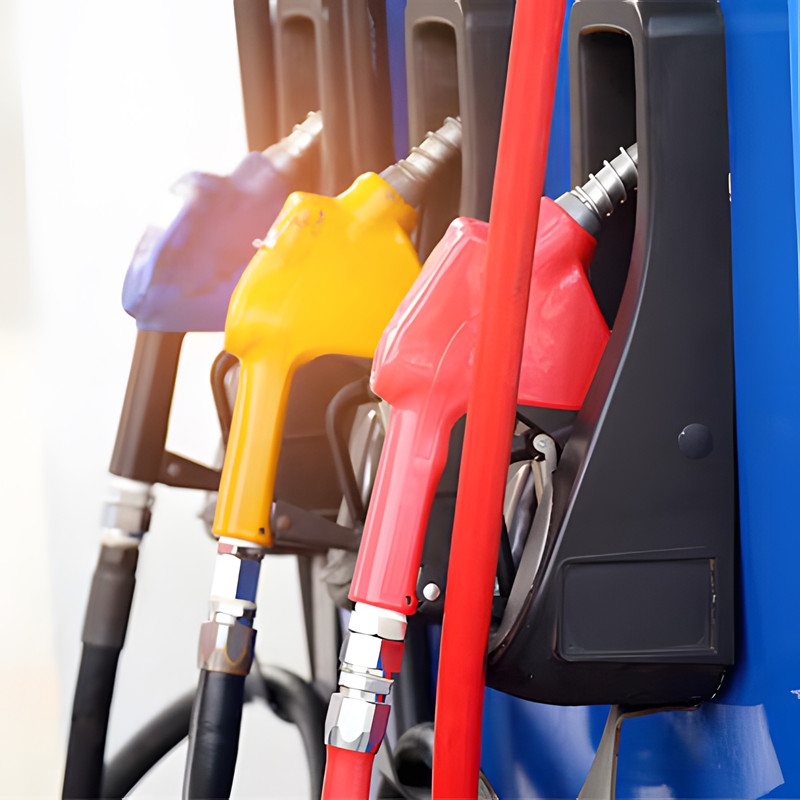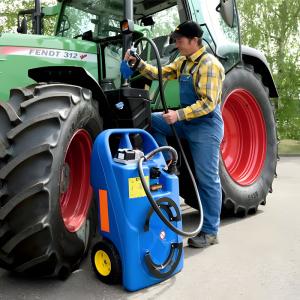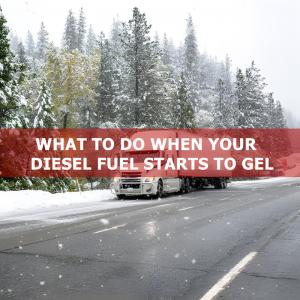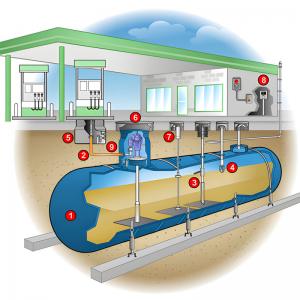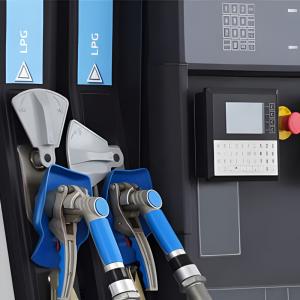How to Decode the Hidden Meaning Behind Gas Pump Nozzle Colors
The Color Code of Fuel nozzles: A Guide to Safe and Smart Refueling
Have you ever pulled into a gas station, feeling a bit rushed, only to be confronted by a confusing array of different colored Fuel nozzles? In that moment of haste, a seemingly simple choice can become a source of anxiety. What if you grab the wrong one? The consequences of misfueling are severe, ranging from expensive repairs to irreversible engine damage.
This confusion is why the color of a fuel nozzle matters. It’s a universal language of safety and efficiency, designed to guide you through a critical process. As a leading manufacturer of fueling equipment, we understand that a fuel nozzle is more than just a simple tool for dispensing liquid—it’s a crucial component of a complex system. This article will serve as your ultimate guide to understanding the color code of fuel nozzles, from the fundamental distinctions between diesel nozzles and gasoline nozzles to the advanced technology behind modern automatic nozzles and vapour recovery nozzles.
Part 1: Unlocking the Fuel Nozzle Color Code
The core question is simple: What do the different colors of fuel nozzles actually mean? While there can be minor regional variations, a global standard has emerged to ensure clarity and safety.
The Green Nozzle: The Universal Sign for Diesel
When you see a green fuel nozzle, you can be almost certain it's for diesel fuel. This color has become the global standard for diesel nozzles, providing a clear and immediate visual cue for drivers of diesel-powered vehicles, from heavy-duty trucks to modern passenger cars. This standardization is critical for avoiding a costly mistake, as diesel engines operate on a completely different combustion principle than gasoline engines. Misfueling a diesel vehicle with gasoline can lead to catastrophic damage to the Fuel pump, injectors, and the engine itself.
Black and Blue Nozzles: The Colors of Gasoline
In most markets, black and blue are the primary colors used for gasoline nozzles. The specific color may vary by region or by the fuel's octane rating. In North America, black is a very common color for unleaded gasoline. In other parts of the world, different octane levels (e.g., 92, 95, 98 octane) might be distinguished by different colors, such as yellow, red, or blue. This color-coding system helps drivers quickly select the correct octane for their vehicle, ensuring optimal performance and preventing engine knock.
A Special Case: The Blue DEF Nozzle
Here’s a potential point of confusion: a blue nozzle might also be used for Diesel Exhaust Fluid (DEF), also known as AdBlue. However, there's a crucial design difference to prevent misfueling. A DEF nozzle has a much smaller diameter than a standard diesel nozzle. This "poka-yoke" or mistake-proofing design ensures that the DEF nozzle physically cannot fit into the fuel tank inlet of a diesel vehicle. This is an excellent example of how smart engineering complements color-coding to enhance safety.
In essence, this color-coding system is a simple yet powerful tool. It’s designed for the hurried driver who needs to make a quick decision in a high-traffic environment, reducing cognitive load and preventing human error.
Part 2: Beyond Color—The Evolution of the Smart Nozzle
Today's fuel nozzles have evolved far beyond their color-coded origins. They are sophisticated pieces of equipment that incorporate advanced technology to enhance safety, efficiency, and environmental protection.
Automatic Shut-off: The Safety Standard for Automatic Nozzles
One of the most significant advancements in modern fueling technology is the automatic shut-off feature, a standard on all our automatic nozzles. This technology works through a unique sensing mechanism. As the fuel tank fills up, the back pressure of the fuel creates a vacuum in a small tube on the tip of the nozzle. When this pressure reaches a certain point—indicating the tank is full—the nozzle's internal mechanism instantly cuts off the fuel flow.
The benefits of this technology are immense:
-
Spill Prevention: It completely eliminates the risk of overfilling the tank, preventing fuel from spilling onto the ground, the vehicle, or the person fueling.
-
Environmental Protection: Fewer spills mean less ground and water contamination.
-
Efficiency: It allows drivers to fuel up without needing to constantly monitor the gauge, freeing them up to perform other tasks or simply relax.
Vapor Recovery: A Breath of Fresh Air
As environmental regulations become more stringent, technologies like vapor recovery have moved from being a niche feature to a regulatory requirement in many regions. A vapour recovery nozzle is designed to capture the gasoline vapors that are displaced from the vehicle’s fuel tank as it's being filled.
Here’s how it works: the nozzle has a special sleeve around its tip. As fuel flows into the tank, the displaced vapors are sucked back into the dispenser through a separate hose and returned to the station’s underground storage tanks. This captured vapor is then either processed or condensed back into liquid fuel.
This technology delivers significant benefits:
-
Air Quality: It dramatically reduces the amount of harmful volatile organic compounds (VOCs) released into the atmosphere, improving air quality in and around gas stations.
-
Safety: By containing flammable vapors, it reduces the risk of fire and explosion.
-
Compliance: It is essential for gas stations to comply with stringent environmental regulations set by bodies like the EPA.
Flow Rate Control and Specialization
Modern fueling equipment is also highly specialized to meet the unique needs of different vehicles. Our diesel nozzles, for instance, are engineered for high-flow rates. This is a critical feature for commercial fleets and trucking companies, where minimizing downtime for refueling is essential. A high-flow diesel nozzle can dispense fuel at over 100 liters per minute, drastically reducing the time a large truck spends at the pump.
In contrast, a gasoline nozzle for passenger cars is designed with a lower flow rate. This prevents overfilling and splash-back in smaller fuel tanks, making the fueling process cleaner and safer for the average driver. The specialization of these nozzles showcases a deep understanding of customer needs and operational demands.
Part 3: Practical Tips to Prevent Misfueling
Despite all the technology, human error can still occur. Here are some practical tips to ensure you always select the correct fuel.
-
Look at the Color, First: As a primary rule of thumb, always remember: green for diesel, black or blue for gasoline. This simple visual check is your first line of defense.
-
Confirm the Label: Before inserting the nozzle, take a second to read the label on the pump and the nozzle itself. The label will explicitly state the fuel type—"Diesel" or the specific octane rating of the gasoline.
-
Pay Attention to Nozzle and Inlet Size: As mentioned, diesel nozzles typically have a larger diameter than gasoline nozzles. This physical difference can prevent you from inserting a diesel nozzle into the smaller fuel tank inlet of a modern gasoline-powered car. However, it's worth noting that it is still possible to mistakenly insert a smaller gasoline nozzle into a diesel fuel tank inlet.
Conclusion: Safe Fueling Starts with the Right Choice
The choice of a fuel nozzle at a gas station is not a trivial one. It's an act of responsibility—to your vehicle, to the environment, and to the safety of those around you. The simple color-coding system is the first layer of defense, a visual cue designed for speed and clarity. But behind the color lies a world of advanced engineering, from the spill-preventing automatic nozzles to the environmentally friendly vapour recovery nozzles.
As a manufacturer of high-quality fueling equipment, our mission is to build products that not only perform reliably but also incorporate the latest safety and environmental standards. We believe that every fueling experience should be simple, safe, and efficient. By understanding the basics of fuel nozzle colors and the technology behind them, you empower yourself to make the right choice every time you fill up.
